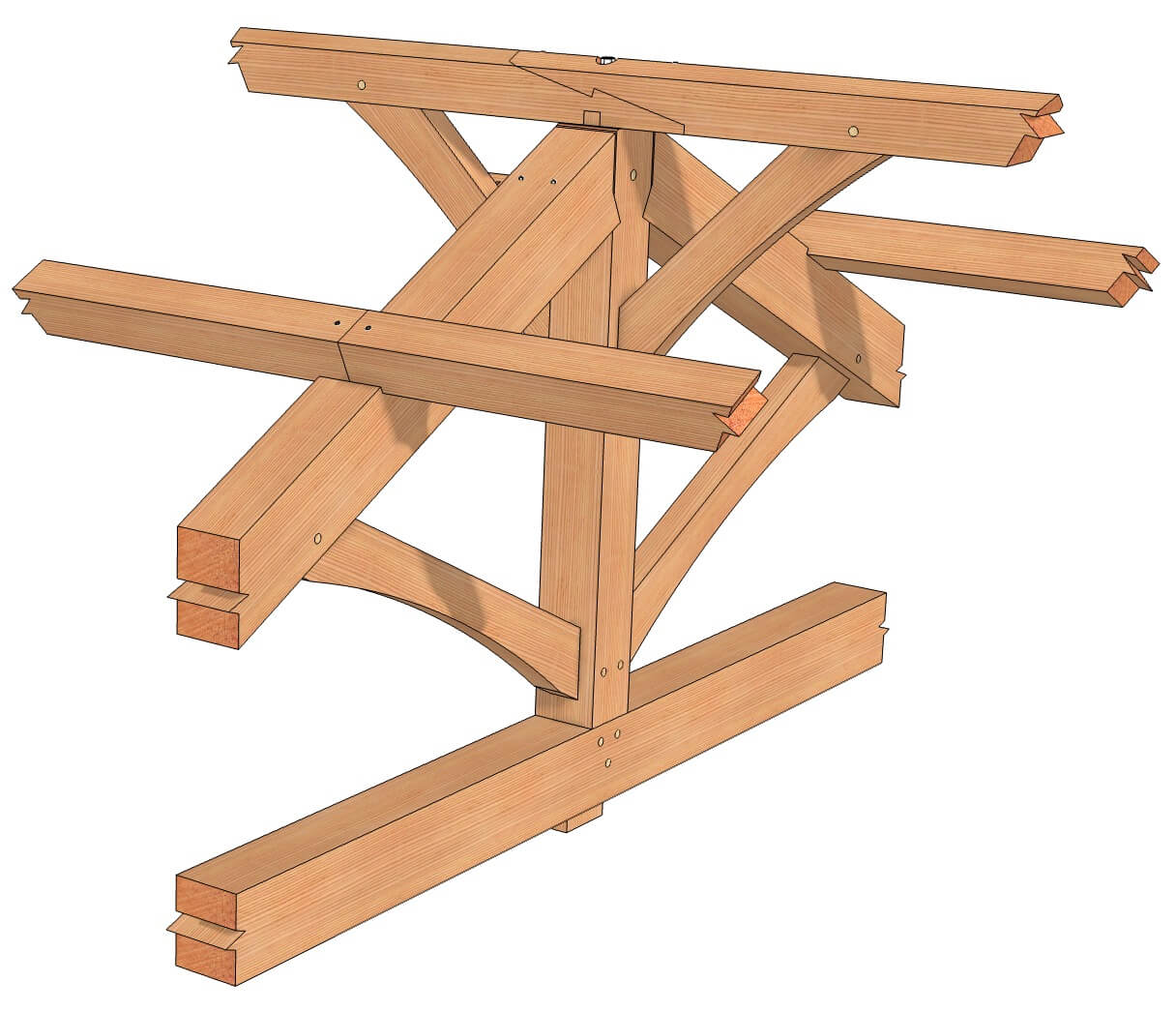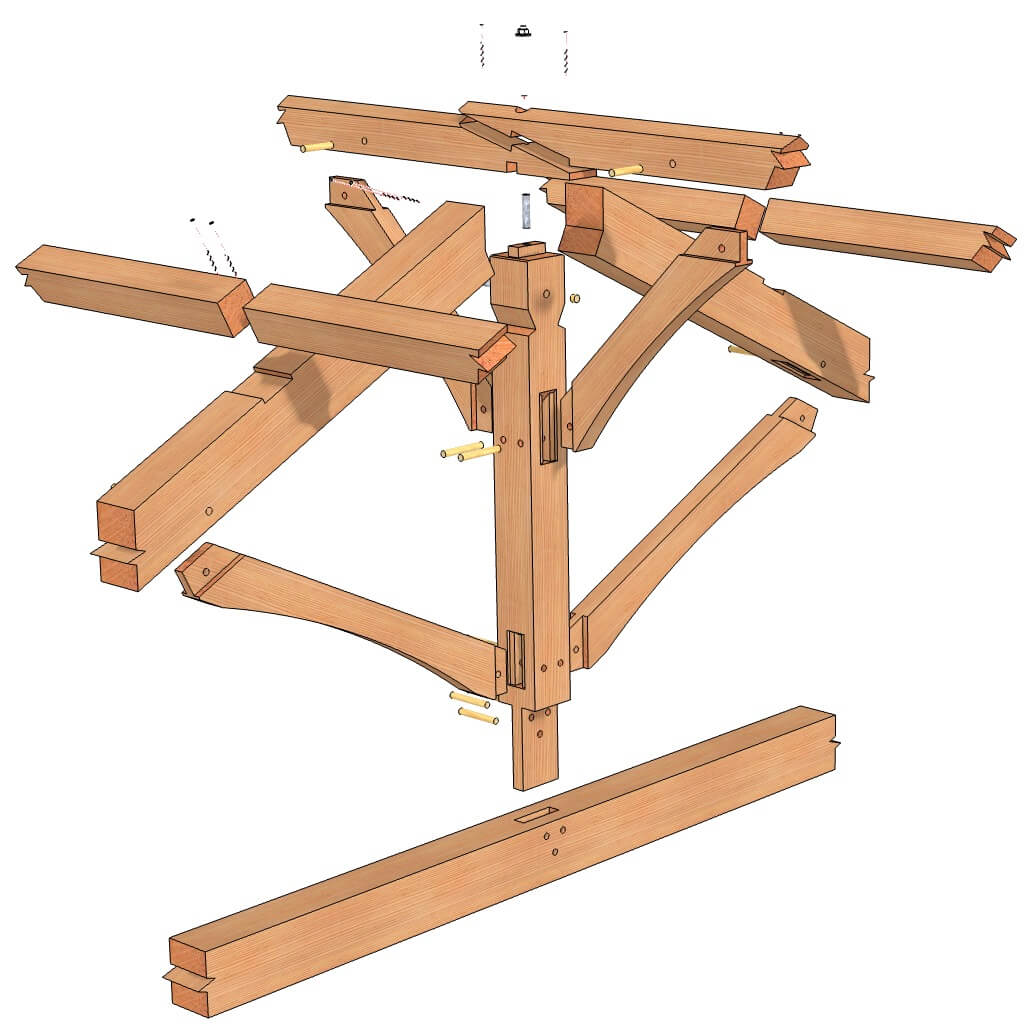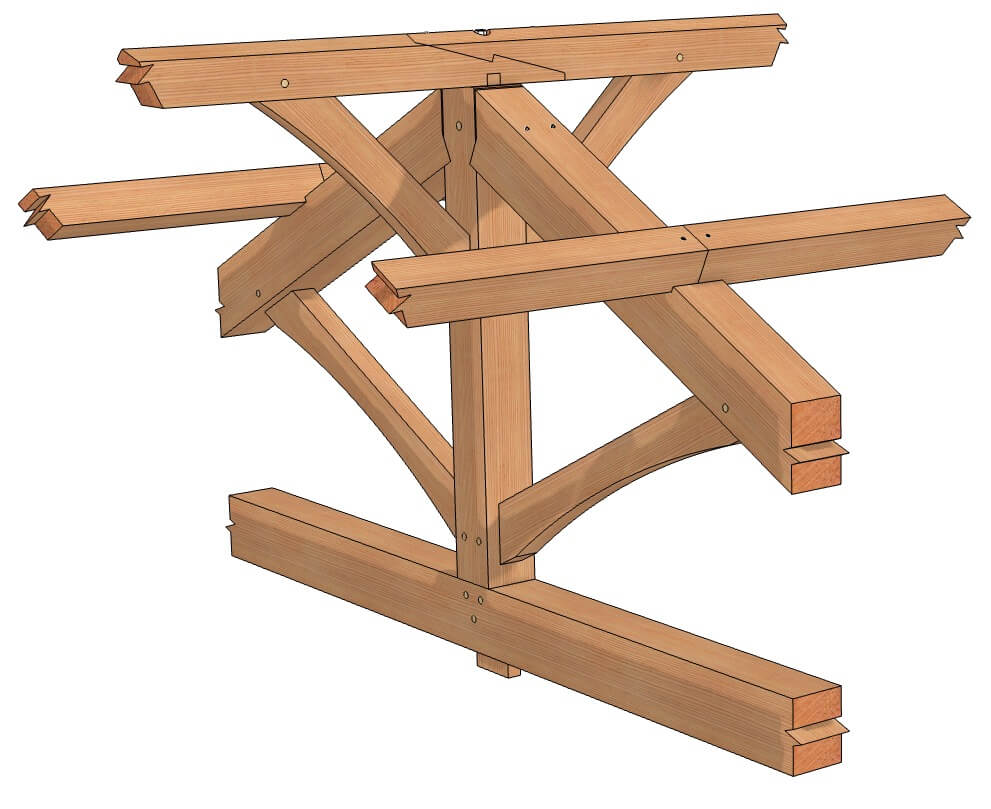
The king post truss assembly is one of the most iconic forms used in timber framing, and also is likely the earliest truss form. One of the strongest truss types, it was the one most commonly used during the 18th and 19th centuries in the eastern U.S.
The bottom chord (the horizontal member), the king post (the vertical member) and the top chord (upper diagonal timbers) make up the king post truss. In this case struts have also been included. They are the diagonal timbers connecting the king post and rafters. A king post truss with these struts is sometimes referred to as a Howe truss.
A through mortise and extended tenon connects the king post to the bottom chord, strengthening the joint and is a beautiful feature in the frame. The top chords rest upon notches in the sides of the king post. That creates another beautiful detail in the finished frame.
Along with the king post assembly, this detail shows the ridge, purlins and knee braces of the frame. The ridge is sporting a scarf joint atop the king post. And the top chord is notched so that the purlins fit snugly into it.
Most of the mortise and tenon joinery in this assembly is secured with hardwood pegs. But often an engineering review will require some reinforcing metal connections, which is the case here. Structural screws fasten the purlins to the top chord. And a Timberlinx connector along with a threaded rod with a washer and nut secures the ridge to the king post. This makes for an extremely strong connection.



Hello. Excellent detail, thank you. I was wondering why the scarf joint in the ridge beam is shown located over the king post here because IIRC, in the article on scarf joints, you caution against locating them on top of the post/king post, and instead recommend locating them over the brace. Would appreciate a clarification. Thank you.
We do recommend them over a knee brace in most cases but that is not a hard and fast rule that must be followed. In this case the loads on the plate are minimal the person that had us design this frame had a certain length timbers that did not allow us to locate it over the scarf.
Do you have any details showing hip rafters joining to the ridge beam with common rafters and a king post all joining together at the ridge beam?
Think this is the closest we have…https://timberframehq.com/hipped-pavilion-joinery-detail/